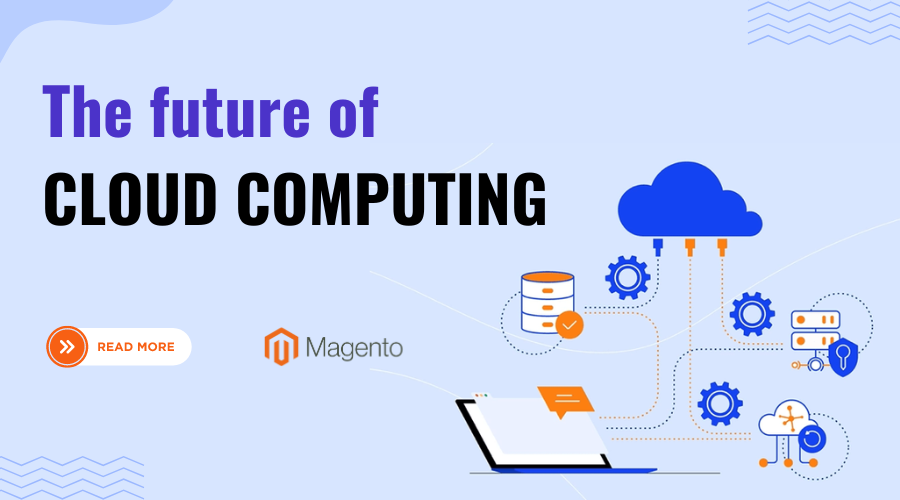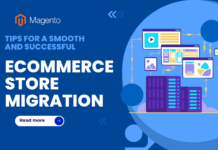
It was the year 1997 when one of the most reputed professors Ramnath K. Chellappa came up with the term ‘Cloud Computing’ during his public talk session. After that, the concept of cloud computing slowly shaped and emerged and became an integral part of the digital world. But it was the pandemic in 2020 that acted as a springboard for cloud computing services.
Now, cloud computing is one of the technological giants without which, the whole digital facility will crumble down. The total market size of cloud computing reached a huge number of $483.98. Even companies around the world have started relying on cloud tech that almost 80% of them set aside $1.2 million every year for cloud only – this is as of the year 2022.
Cloud computing Services are growing at such a pace and its impact on software development has become quite significant. Cloud Computing helps a lot with software development. Businesses can now boost their efficiency, drive growth, and gain a competitive edge in the market. In this blog post, we will look at how cloud computing and cloud services providers have revolutionized software development and which new opportunities it has brought for software developers.
Table of Contents
I. How Cloud Computing has reshaped software development?
Cloud computing has completely revolutionized the way software solutions are developed and deployed. The process involves testing, developing, and deploying new software solutions much easier than earlier. Because of cloud computing, software developers now don’t need to spend on extravagant infrastructure as now they get easy access to open testing platforms, development platforms, and deployment tools.
Deployment of software solutions has also become easier for all the organizations out there. Now, there is no need to install the software solutions on individual machines as the software is just deployed on the cloud platform and all the users get remote access. Therefore, making the process much better and efficient, when it comes to software deployment.

Additionally, cloud computing allows software developers to conduct comprehensive software quality testing as developers now can test the software against different platforms, and configurations.
Another most-talked-about advantage of cloud computing in software development is that it facilitates easy collaboration within a team that is geographically dispersed. This helps your developers to sit in different corners of the world and work on the same project while getting real time updates.
The future of Cloud Computing
The future of cloud computing is full of innovations and opportunities as new advanced developments are on the horizon. The cloud is all set to reshape the software development world. What we see today is just a glimpse of what cloud computing has in its bag for the software development realm, be it ML and AI to serverless computing. Read ahead about some of the most talked-about cloud computing developments that software developers should also keep an eye on.
II. Innovations and Opportunities for Software Developers
1. Serverless Architecture
Serverless Architecture is a type of cloud computing model where cloud providers do the management of infrastructure and this aids developers to narrow down their focus on coding only without the need to worry about the management of the cloud server. In the serverless architecture, software developers write single-purpose, small functions that are triggered by specific requests or functions.
All such functions are executed in ephemeral containers that are both managed and crafted by the cloud service provider. One of the most thrilling advantages of serverless architecture is scalability. The automatic scaling power of the serverless architecture allows developers to deal with surges in traffic with ease.
2. Artificial Intelligence
Artificial Intelligence and Machine Learning have now all the updates and tools in their arsenal to play a more significant role in taking cloud resource management to the next level. According to the stats and technological innovations, the cloud was not ready to adopt AI and ML. But when the organizations had to deal with the devastating pandemic, Microsoft was forced to bring ‘Team’ to the market. However, the availability of AI to the clients has to do more adapting the infrastructure than equipping clients with the right firepower.

Most of the current cloud infrastructure is designed to deal with different workloads at the same time and it uses the power of GPU chips. These chips are considered great for AI because they can deal with a long list of calculations at the same time.
Cloud engineers, software developers, ML engineers, and cloud software architects can come together for the deployment of cost-effective Large Language Models (LLMs) that don’t devour the cloud budget.
3. Distributed Applications in logical monoliths
The traditional method of web app development involves breaking giant applications into small applications. These are a type of independently deployed units known as microservices. Every microservices that comes from big applications functions independently but they all contribute to the overall functionality of the app. But microservices make the development and deployment of applications an arduous process.
Since there are too many nudges running together, the developers need to come up with additional services like Grafana, Apache Zookeeper, and Kibana so that the nudges can be tracked and managed.
One of the best solutions to deal with this issue is to build applications as logical monoliths. This allows the software developer to build a cohesive coding structure without overlapping the method of code writing and deployment. Such an approach requires an automated system that can deal with both code distribution and handling.
4. Containerization
The growing popularity of containerization will skyrocket the use of cloud-native applications. Containerization is a type of software deployment process that bundles all the application’s code along with the libraries and files it needs to run on any infrastructure. With the help of containerization, a single software package can be built and it can run all types of devices and operating systems.

Technological marbles like Docker and Kubernetes allow organizations to deploy and scale cloud-native apps and manage complicated applications in the most seamless way possible. Also, containerization brings along other benefits like fault tolerance, portability, scalability, and agility. In the future, both containerization and cloud computing will grow together.
5. Internet of Things
The increasing popularity and adoption of the Internet of Things is going to act as an accelerator for the increasing adoption of cloud computing, especially in the case of software development. With more and more devices getting connected with the help of the internet, cloud computing is going to be used more for security and scalability.
By using cloud computing for security and scalability, software developers can use the power of AI, ML, and Deep Learning in the IoT realm to build smart applications that can use big data to make predictions and provide better insights. For example, when coupled with cloud computing, software developers can use IoT to build applications that can track health conditions, analyze patterns, raise an alarm on unusual data creation, and automate tasks.
When so many devices will be interconnected with each other, the security of personal data will be one of the biggest challenges for software developers. This is where software developers will have to unleash the real potential of cloud computing to make the devices, data, and IoT realm safe and reliable.
IV. Challenges and Considerations
Have you ever wondered about the real challenges of Cloud Computing that come with such huge convenience? We all agree that cloud computing has become an integral part of how businesses and individuals store, process, and access data and apps. However, this convenience comes with its own set of hurdles and obstacles. Let’s read about the complex challenges that software developers & business owners may face while opting for Cloud Computing.
Compliance and Legal issues
Navigating the regulatory and legal landscape is one of the biggest challenges for software developers thriving on cloud computing. There are industry-specific regulations out there along with data sovereignty laws that confine the way data is stored and have strict guidelines when it comes to the place where data is stored.
Organizations using cloud computing for software development must fathom that all their cloud deployments are perfectly aligned with the standard laws related to data privacy and security. This demands a brief analysis of the current regulations and guidelines.
V. Data Privacy and Security
The most talked-about challenges when it comes to the integration of cloud computing with software development are data security and privacy. There is no doubt about the high level of security that comes built-in with cloud servers but because of the nature of the cloud service, personal data and sensitive information is always stored off-premise. This may cross more than one jurisdiction.

If this is not managed properly, it can further complicate compliance with data protection regulations and make the cloud server more vulnerable to cyberattacks. All the businesses out there must fathom the shared responsibility model of cloud security.
Vendor Lock-in
If an organization becomes wholly dependent on a single cloud service provider, this can lead to vendor lock-in problems in the future. In such a case, moving to a different cloud server and shifting all the data stored on the cloud from one provider to another can prove to be a time-consuming, complicated, and costly affair for organizations.
To deal with the issue, organizations must move forward with a multi-cloud strategy or hybrid cloud model. This will help organizations to avoid dependency on a single cloud service provider.
Companies can avoid the risks of vendor lock-in by following these strategies:
- Researching Services Thoroughly:
It is advisable for firms to test a cloud provider’s service before signing up, this will enable them to confirm if the required service levels are met. Opt for cloud service providers who have expertise in dealing with cloud and transform your business to drive innovation. You can explore their portfolio to understand their experience and what all sorts of work they have done in the past for your industry. This will help you get a fair understanding as to which cloud service provider you need to go ahead with.
- Making Data Transferable:
Data should be kept flexible. In order that data can adapt to any environment easily; it should be stored in universal formats rather than specific ones and also data models must be defined clearly.
- Backup Your Backups:
Internal backups act as safety nets, should a business need its information and extracting it from a cloud storage appear difficult or time-consuming, then that company could still access its files from local machines. Additionally, they provide some defense against ransomware attacks which may lead to total loss of everything including backups saved on network drives!
- Diversify using multi-cloud or hybrid approach:
Instead of relying on one cloud provider entirely, organizations should try and test several providers so as not to depend too much on any particular single vendor or better yet, make a wise choice. With hybrid setup some parts of data remain within the organization’s control either at private clouds or locally stored onsite.
Conclusion
Cloud Computing is here to stay; as we move ahead with the expanding opportunities, it is clear that its impact on the software development world is multifaceted and deep. It is not just about driving innovation and bringing in new features for increased cost-efficiency and scalability, cloud computing has completely redefined how software applications are developed and deployed.
However, any good service or product that brings along the opportunities and innovations, has its own set of considerations and challenges too—In this case, specifically the ones that software developers must look into. It’s best for the developers to use the right methods, tools, and approaches in Cloud Computing to make the new horizons of application development easily accessible.
To sum up–Cloud computing not just opens up countless avenues for developers, but also allows them to collaborate, create innovative solutions that add value both for businesses as well as end users. Developers can tap into all the technological advancements offered by clouds so as not only catch up but also get ahead in this fast-paced digital era using the right tools, methodologies and approaches. Speak with Cloud Experts or a software development company to start your cloud journey today.
Author bio
Sunil Chaudhary, a skilled Content writer with 10 years of experience in Digital Marketing field who specialize in writing digital and tech based content. He desires to help individuals understand the basics of industries and the trends that will help them grow their business. He is committed to delivering engaging and informative materials and leverages his extensive experience to empower firms in navigating the ever-evolving digital landscape effectively.












![[SALE OFF] Discount 30% All Premium Extensions On Christmas And New Year 2025 christmas-and-new-year-2025](https://landofcoder.b-cdn.net/wp-content/uploads/2024/12/christmas-and-new-year-2025-1-218x150.png)






